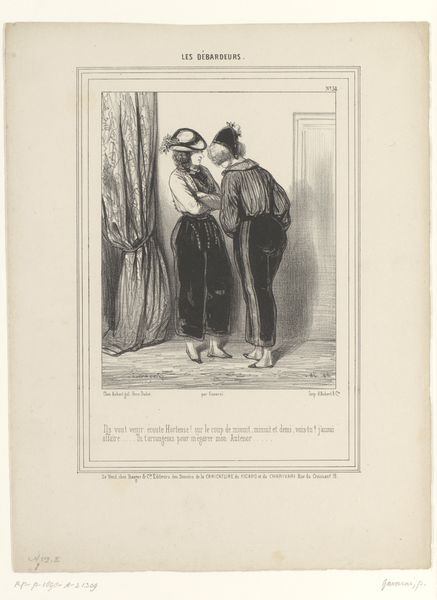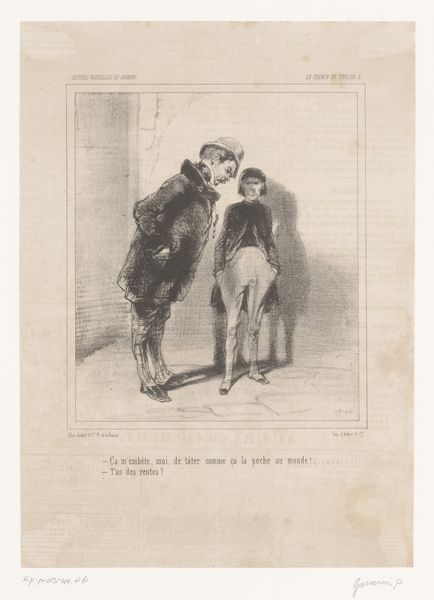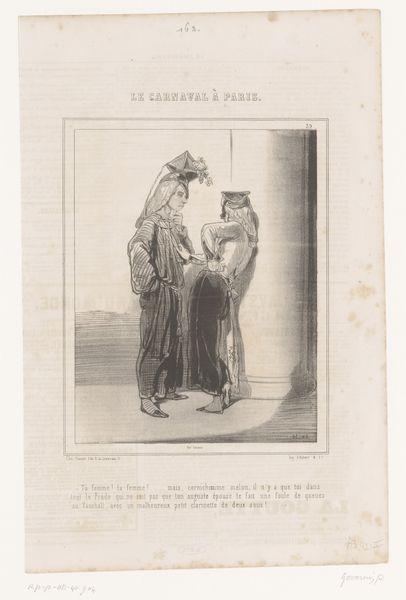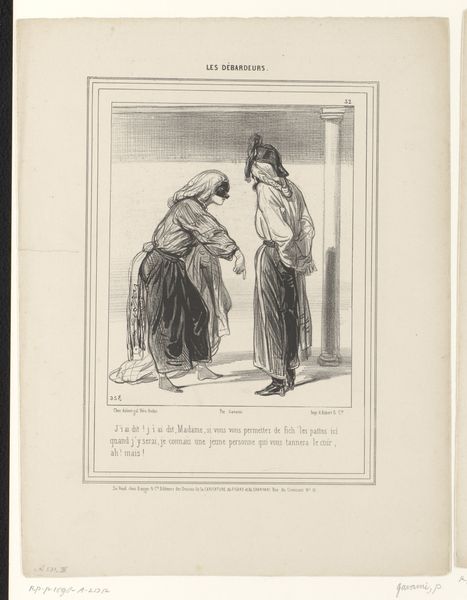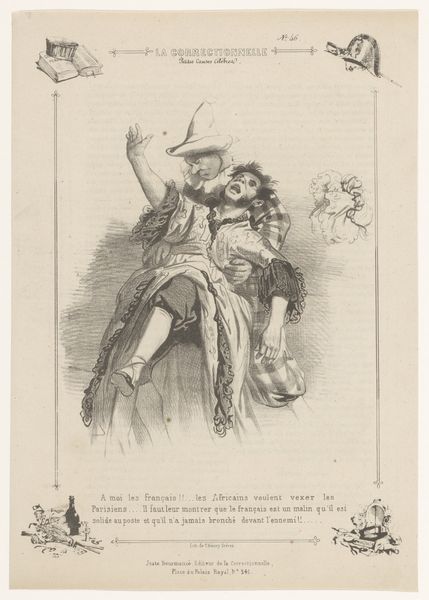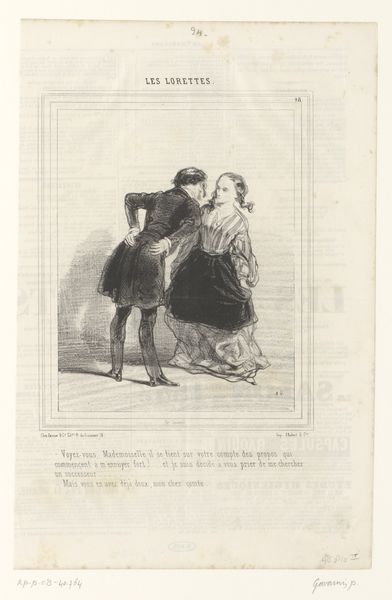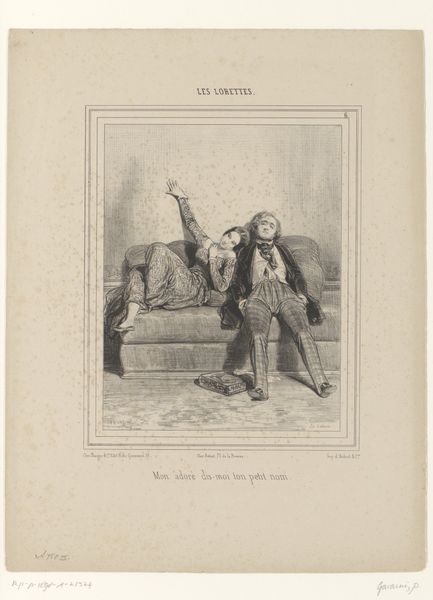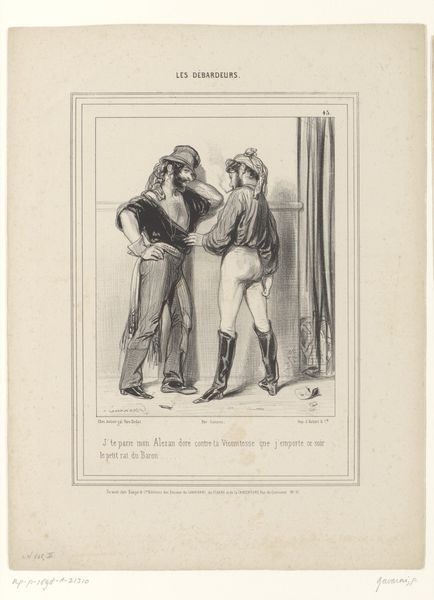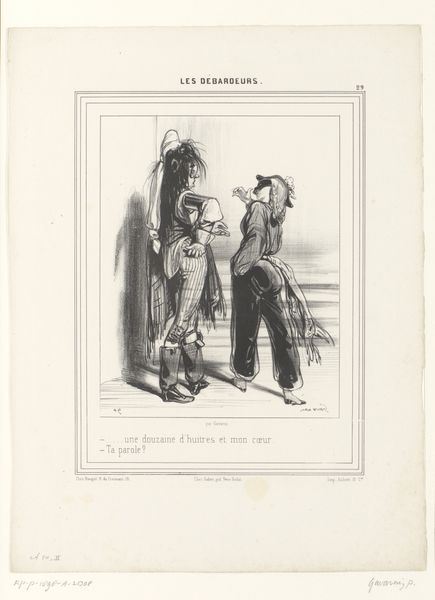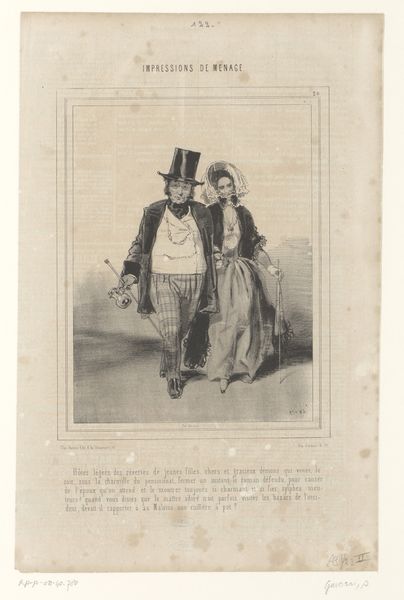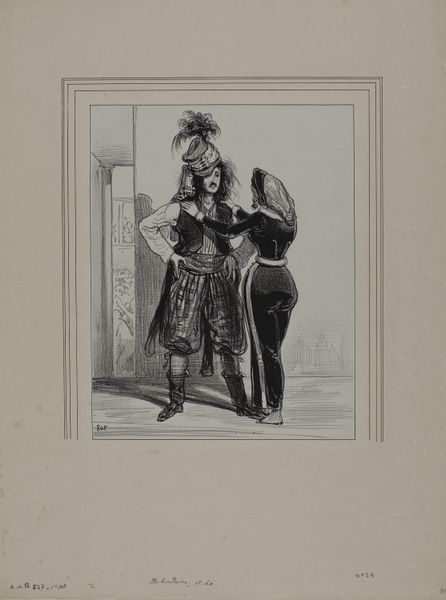
drawing, lithograph, print
#
drawing
#
lithograph
# print
#
caricature
#
old engraving style
#
figuration
#
romanticism
#
genre-painting
Dimensions: height 363 mm, width 260 mm
Copyright: Rijks Museum: Open Domain
Editor: So, this is "Meisje in mannenkostuum plaagt een verklede man," a lithograph by Paul Gavarni from 1843. I find it kind of humorous; there's something interesting in the reversal of roles. How does the process of printmaking add to its message, do you think? Curator: The choice of lithography is key. Think of its relatively recent invention at this time – it democratized image production. Unlike etching or engraving, it allowed for a faster, more fluid execution. It's intriguing to consider who was consuming these prints and in what context. Do you think that this lithograph suggests any comments on labor or class dynamics? Editor: That’s an interesting question! Maybe... the image depicts someone of a certain class mocking the other. I hadn’t really considered it from that angle. Are the clothes giving them a false sense of power, something disposable, something only of appearances, for sale and resale? Curator: Precisely! Gavarni exploits the ease of reproduction for satire, commenting on the construction of identity through costume. The "girl in a man's costume" isn't just cross-dressing; she's appropriating the *materials* and *appearance* of power, highlighting its performative nature. How might we read her gaze in light of commodity culture? Editor: The gaze emphasizes power, which circles back to Gavarni and the ease of printing; making something that feels limited into something mass-produced. Now I am questioning everything. Thank you. Curator: And I appreciate how you pushed me to articulate Gavarni's subtle engagement with material culture and social critique. These details truly enrich the work.
Comments
No comments
Be the first to comment and join the conversation on the ultimate creative platform.
